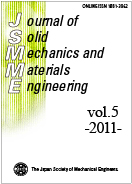Volume 5, Issue 7
Displaying 1-5 of 5 articles from this issue
- |<
- <
- 1
- >
- >|
Papers
-
2011Volume 5Issue 7 Pages 311-322
Published: 2011
Released on J-STAGE: July 29, 2011
Download PDF (687K) -
2011Volume 5Issue 7 Pages 323-334
Published: 2011
Released on J-STAGE: July 29, 2011
Download PDF (668K) -
2011Volume 5Issue 7 Pages 335-347
Published: 2011
Released on J-STAGE: July 29, 2011
Download PDF (653K) -
2011Volume 5Issue 7 Pages 348-359
Published: 2011
Released on J-STAGE: July 29, 2011
Download PDF (13568K) -
2011Volume 5Issue 7 Pages 360-369
Published: 2011
Released on J-STAGE: July 29, 2011
Download PDF (597K)
- |<
- <
- 1
- >
- >|
